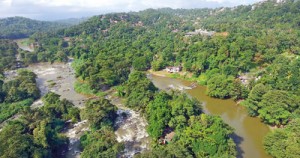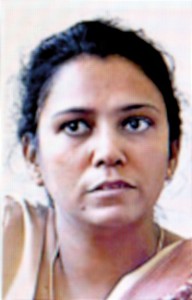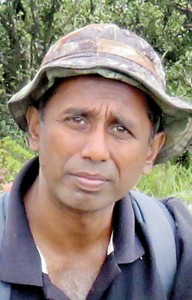News
Waratenna-Hakkinda declared an EPA after long fought battle by environmentalists
The battle was long and hard, with victory being achieved this week, as Waratenna-Hakkinda in Kandy, home of a critically-endangered freshwater fish, being declared an Environmental Protection Area (EPA).

The spectacular Waratenna-Hakkinda area in Kandy
Environmentalists, foremost among whom is researcher Pradeep Samarawickrama are agog with excitement as President Maithripala Sirisena in his capacity as Environment Minister issued the Gazette Extraordinary 2024/06 dated June 19 and titled ‘Order to declare the Waratenna-Hakkinda EPA’ under Section 24C of the National Environmental Act.
Now Waratenna-Hakkinda joins Negombo’s Muthurajawela wetland; Nuwara Eliya’s Lake Gregory; Bulathsinhala’s Walawwewatta Waturana; Moratuwa’s Bolgoda Lake; Sri Jayewardenepura-Kotte’s Talangama Tank; Moneragala’s Maragala mountain range; Matale’s Knuckles mountain range; and Kandy’s Hantane mountain range as an EPA.
In these EPAs, the Central Environmental Authority ‘exercises, performs and discharges any powers, duties, functions related to planning and development’.
The Waratenna-Hakkinda EPA encompasses a one-kilometre stretch of the Mahaweli river which covers its narrowest point (three-metre width) and its widest point (1.7km-width), said environmental lawyer Jagath Gunawardene, explaining that the landmarks are, on one end the Getambe bridge and on the other, the Dodanwala suspension bridge.

Environmental lawyer Jagath Gunawardena
Referring to the importance of the area, he said that within the widest spot of the Mahaweli there are several rocky islands and there is a unique geological formation here.
“There is high biodiversity and high endemism with uniquely-adapted species, while the area is also of historical, cultural and religious value,” reiterated Mr. Gunawardena, ticking off the details on his fingers.
The area came under the spotlight when Mr. Samarawickrama in early 2011 found the critically-endangered gadeya or Green Labeo (Labeo fisheri) here and the Sunday Times launched a campaign seeking to protect Waratenna-Hakkinda.
The gadeya, a herbivorous fish, similar to the carp, is usually mud green or olive green and has a long, robust body with a mouth turned down. While it feeds on algae, it requires clear flowing water and a rocky bottom which aids the growth of algae.
Earlier it had been found in the Mahaweli system, at Polgolla and near Victoria, but with the construction of dams under the accelerated Mahaweli Scheme, its habitats had been submerged and changed.
Back in 1980, environmental scientist Dr. Ranil Senanayake had predicted that the Polgolla and Victoria projects would destroy the gadeya’s habitat while in 1990, Dr. Eric Wikramanayake had said that this fish may already be extinct.
The gadeya is the “most” significant faunal species inhabiting this area, said Mr. Gunawardena, listing some of the rare aquatic plants as six species of the endemic Podostemaceae, the endemic Cryptocoryne species threatened with extinction, the Lagenandra species and also a small community of yak-erabadu trees.

Prof. Deepthi Yakandawala
It was Prof. Deepthi Yakandawala of the Department of Botany, Faculty of Science, Peradeniya University who at that time pinpointed the dangers faced by the remarkable flowering plants of the family Podostemaceae and also the popular aquarium plants, the ‘water trumpet’ (Cryptocoryne, commonly known as Athi-udayan) due to the threats to this habitat.
She reiterated that six of the 10 species of the aquatic genus Cryptocoryne represented in Sri Lanka are critically endangered, while of the other four, three are endangered and one is vulnerable.
Waratenna-Hakkinda is also replete with birds, butterflies and dragonflies and is an area where a large number of fruit bats (flying foxes) roost, the Sunday Times learns, while the area is of high interest to geology as well as biology students.
“It is a study site,” says Mr. Gunawardena, pointing out that the aesthetic value of Waratenna-Hakkinda opens up the potential for eco-tourism.
However, he is emphatic that eco-tourism should not come in the form of putting up hotels, which is a clear “no, no” but more on the lines of walk-trails etc. There is breathtaking beauty around the Dodanwala suspension bridge.

Researcher Pradeep Samarawickrama
The area was under severe threat from the hotel industry, housing, unauthorized filling and a mini-hydro power project which resulted in devastating dynamiting which killed the gadeya.
Environmentalists opened the eyes of the public as well as the authorities to the danger of such unplanned and unchecked development in the area.
The Sunday Times highlighted these issues in a series of articles starting with ‘Near-extinct fish faces death by dynamite’ on July 24, 2011; followed by ‘Now vital aquatic plants face similar fate as fish’ on August 7, 2011; and ‘CEA urged to protect endangered species area in Getambe’ on May 13, 2012.

